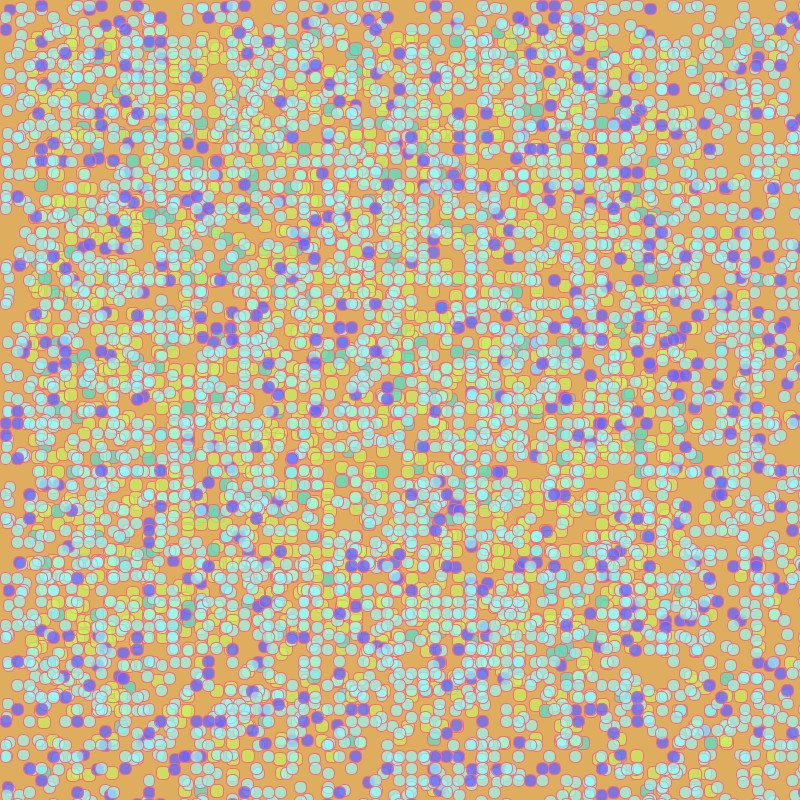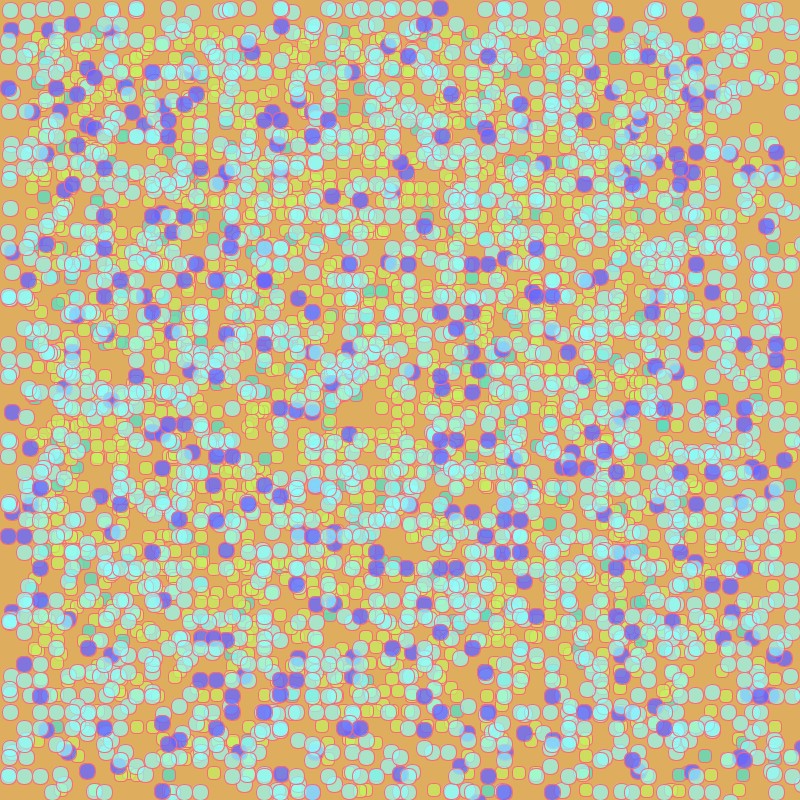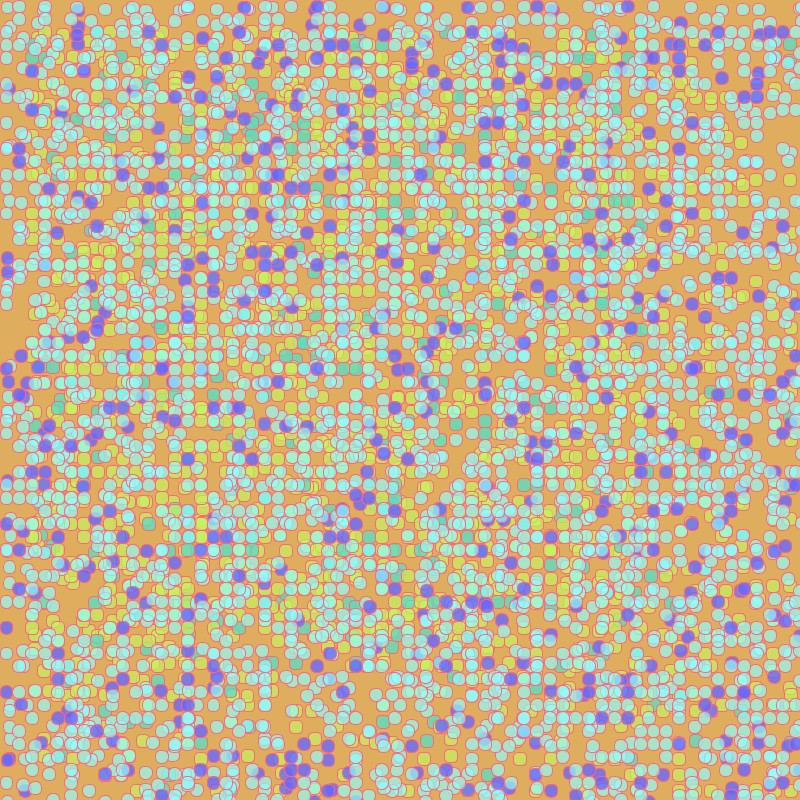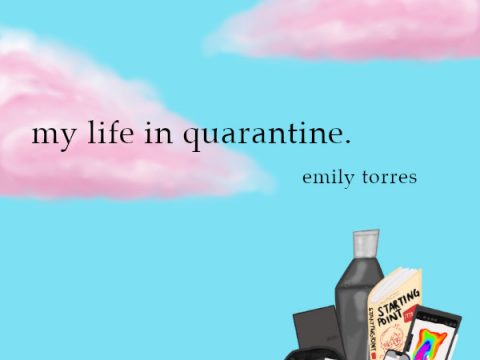




When working on creating patterns using repetition, I did not have a particular vision of how my end result should look. Rather, I played around with color palette, shapes, placement, size, and other key elements of a composition. Even changing the size or placement of a shape in the slightest can lead to the artwork shifting into a completely different result. When creating my Molnar inspired pieces, I played around with the size and spacing of my ellipses to see how it would come out. Creating these pieces required a lot of experimentation with code and it was really fun to see how increasing/decreasing the value of one variable can make all the difference in a coded art piece. However, although one or multiple variables may change to create something different, the pieces remain similar to one another.
Gradualism is such a unique type of art since it displays more than just the end result. It displays the process and journey the artist went on when creating an art piece. The process reveals what went into developing the overall composition and the reasons behind the various elements that go into making a work of art.
Repetition in art is almost like a balanced chaos, meaning that although the work may not have all elements scattered evenly throughout all areas of the piece or have a linear appearance, something about the placement of the elements creates this sense of balance throughout the work. It allows for the audience to truly study the piece in its entirety and make their eyes gradually travel throughout the piece. By including repetition in an artwork, the audience can get a sense of the various directions the artist traveled in order to produce their result. Overall, it was a very interesting experience coding and experimenting with possible outcomes for my Molnar inspired pieces.

